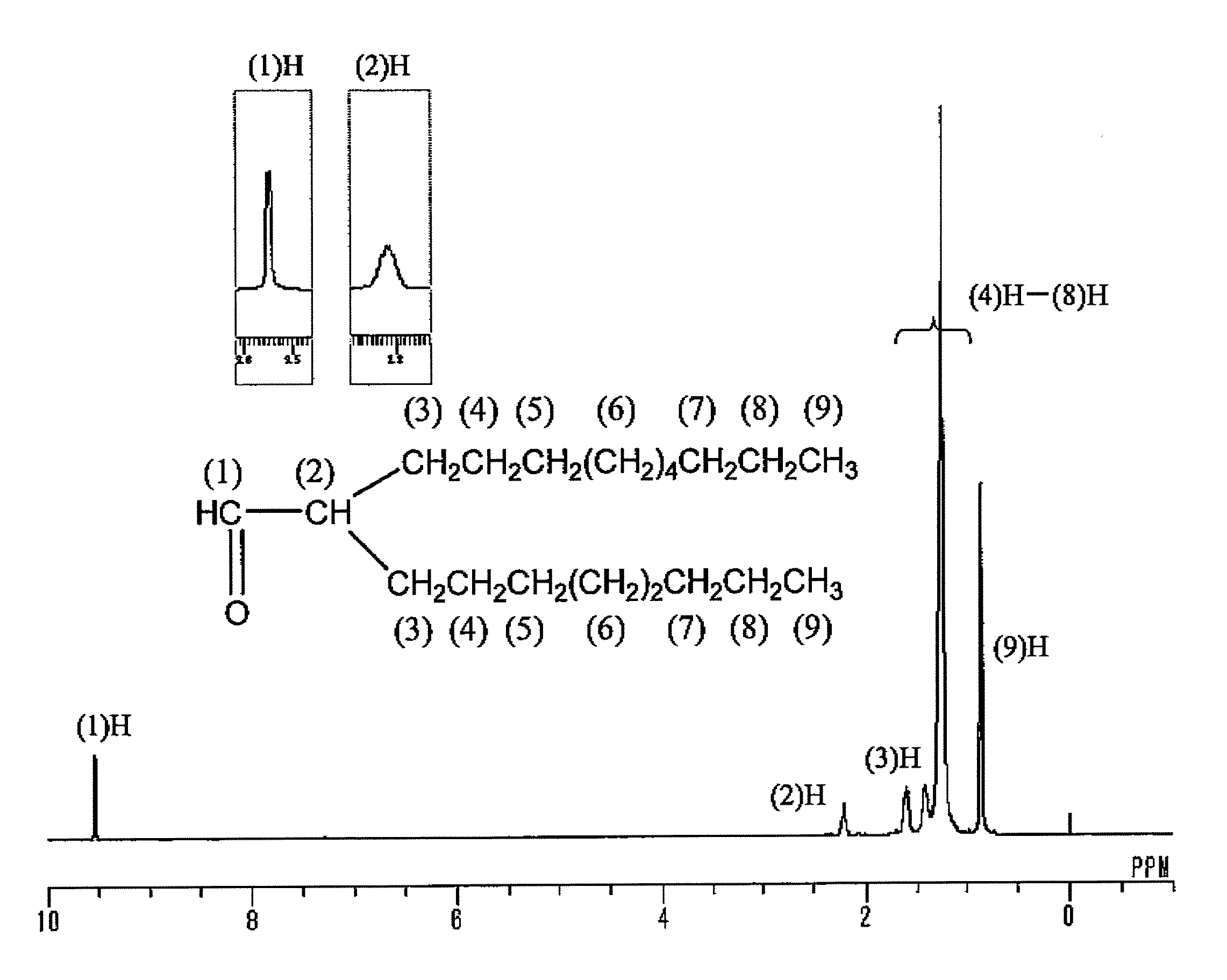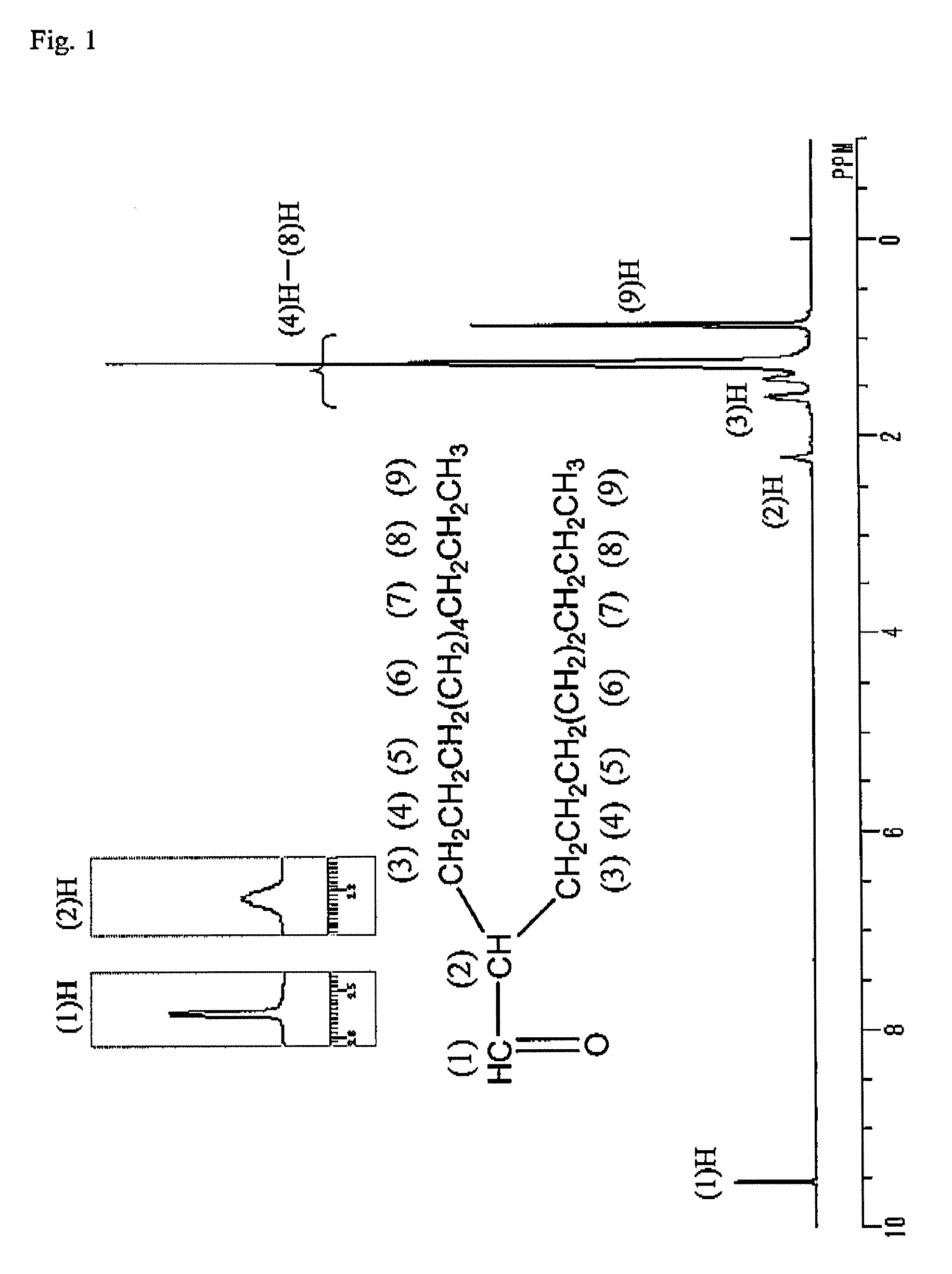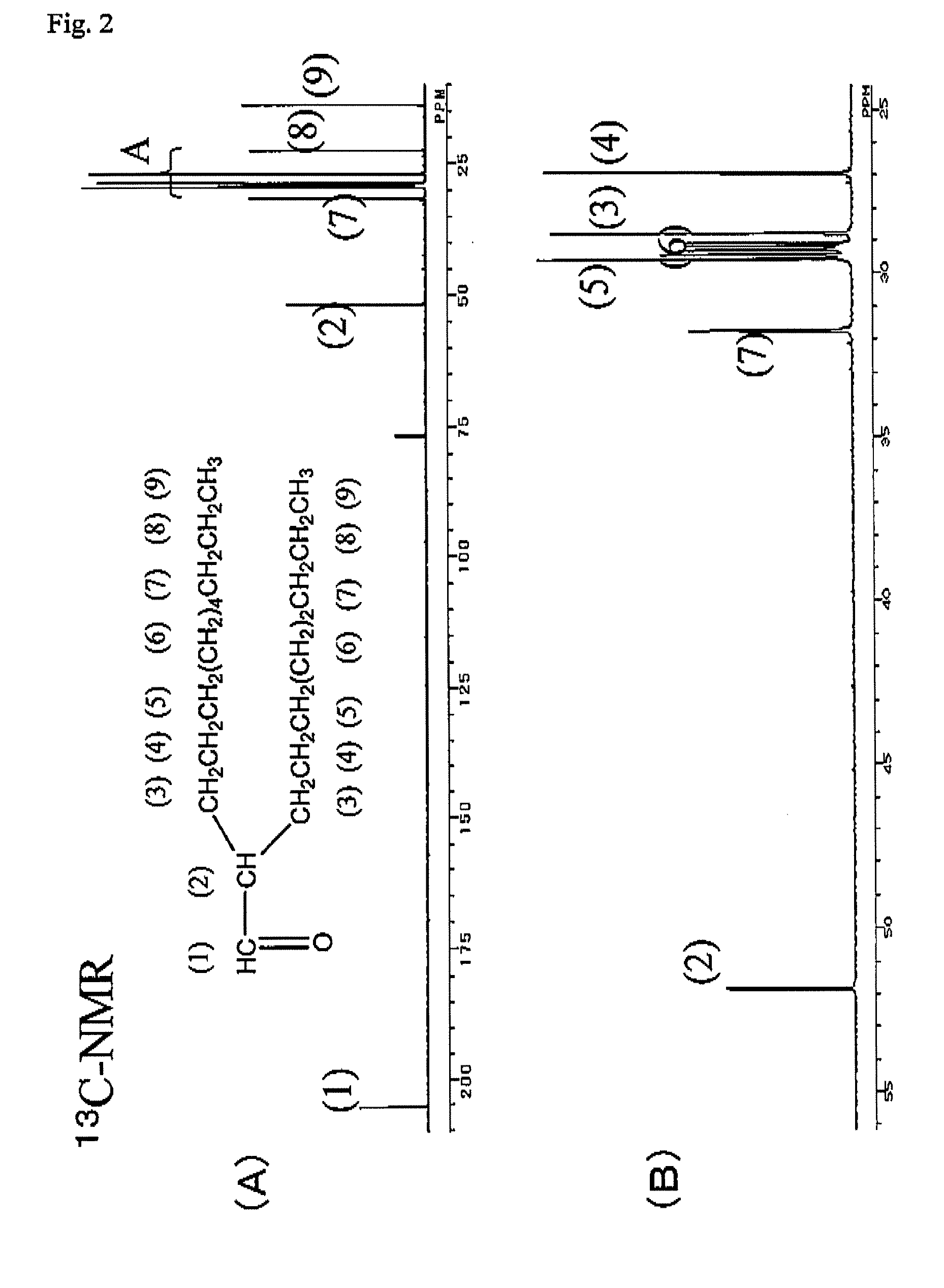Process for producing aldehyde with 2-position branched long-chain alkyl
a long-chain alkyl, branched technology, applied in the preparation of carbonyl compounds, heterocyclic compounds, organic chemistry, etc., can solve the problems of inability to produce a 2-position branched saturated aldehyde with high purity, inability to produce a production method, and inability to achieve high yield and activity. , the effect of high selectivity
- Summary
- Abstract
- Description
- Claims
- Application Information
AI Technical Summary
Benefits of technology
Problems solved by technology
Method used
Image
Examples
production example 1
(1) Dimerization Reaction of Linear α-Olefin
[0041]3.0 kg of 1-decene, zirconocene dichloride (metallocene complex, 0.9 g, 3 mmol) and methylaluminoxane (produced by Albemarle Corp., 8 mmol (in terms of Al)) were placed sequentially in a three-neck flask having an internal capacity of 5 L having been substituted with nitrogen, and stirred at room temperature (ca. 20° C.). The reaction solution was changed from yellow to reddish brown. After reacting for 48 hours, 30 mL of methanol was added thereto to terminate the reaction, and 300 mL of a hydrochloric acid aqueous solution was added to the reaction solution, followed by washing the organic layer. The organic layer was then distilled in vacuum to obtain 2.5 kg of a distillate fraction (decene dimer) having a boiling point of 120 to 125° C. at 26.6 Pa (0.2 Torr) Gas chromatography analysis of the distillate fraction revealed that the concentration of the decene dimer was 99% by mass, and the proportion of the vinylidene olefin (2-oct...
example 1
(1) Acid Rearrangement Reaction with Molybdophosphoric Acid (Heteropoly Acid)
[0043]0.5 g of 12 molybdo(IV)phosphoric acid n hydrate (produced by Kanto Chemical Co., Inc.) was charged in a flask having an internal capacity of 300 mL, and while heating the flask to 170° C., water vaporized from the hydrate was removed at a vacuum degree of 133 Pa (1 Torr). The crystals were changed from pale yellow to bluish purple. 100 g (338 mmol) of 2-octyl-1,2-epoxydodecane produced in Production Example 1 was added to 12 molybdo(IV) phosphoric acid having been dehydrated, and stirred at room temperature (25° C.). Heat was generated after lapsing about 10 minutes, and the internal temperature was returned to room temperature after lapsing 30 minutes. The reaction mixture was then heated over an oil bath at 100° C., and heated at that temperature for 2 hours. After cooling, the reaction product was diluted with 100 mL of toluene, and then washed with water to obtain water washing product. Gas chrom...
example 2
Acid Rearrangement Reaction with Silicotungstic Acid (Heteropoly Acid)
[0051]0.05 g of silicotungstic acid hydrate (produced by Kanto Chemical Co., Inc.) was charged in a flask having an internal capacity of 300 mL, and while heating the flask to 170° C., water vaporized from the hydrate was removed at a vacuum degree of 133 Pa (1 Torr). The crystals were changed from white to gray. 100 g (338 mmol) of 2-octyl-1,2-epoxydodecane produced in Production Example 1 was added to silicotungstic acid having been dehydrated, and stirred at room temperature (25° C.). Heat was vigorously generated after lapsing several minutes, and the internal temperature was returned to around room temperature after lapsing 1 hour. The reaction mixture was then heated over an oil bath at 100° C., and heated at that temperature for 1 hour. After cooling, the reaction product was diluted with 100 mL of toluene, and then washed with water to obtain concentrated reaction product. The resulting concentrated reacti...
PUM
| Property | Measurement | Unit |
|---|---|---|
| temperature | aaaaa | aaaaa |
| temperature | aaaaa | aaaaa |
| temperature | aaaaa | aaaaa |
Abstract
Description
Claims
Application Information
 Login to View More
Login to View More - R&D
- Intellectual Property
- Life Sciences
- Materials
- Tech Scout
- Unparalleled Data Quality
- Higher Quality Content
- 60% Fewer Hallucinations
Browse by: Latest US Patents, China's latest patents, Technical Efficacy Thesaurus, Application Domain, Technology Topic, Popular Technical Reports.
© 2025 PatSnap. All rights reserved.Legal|Privacy policy|Modern Slavery Act Transparency Statement|Sitemap|About US| Contact US: help@patsnap.com



